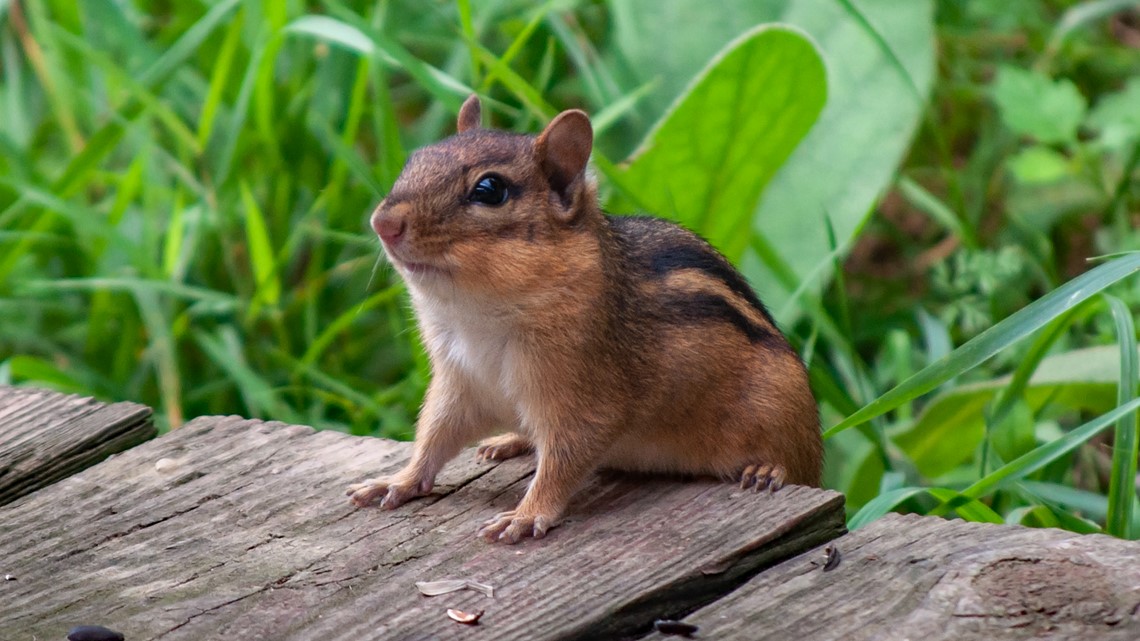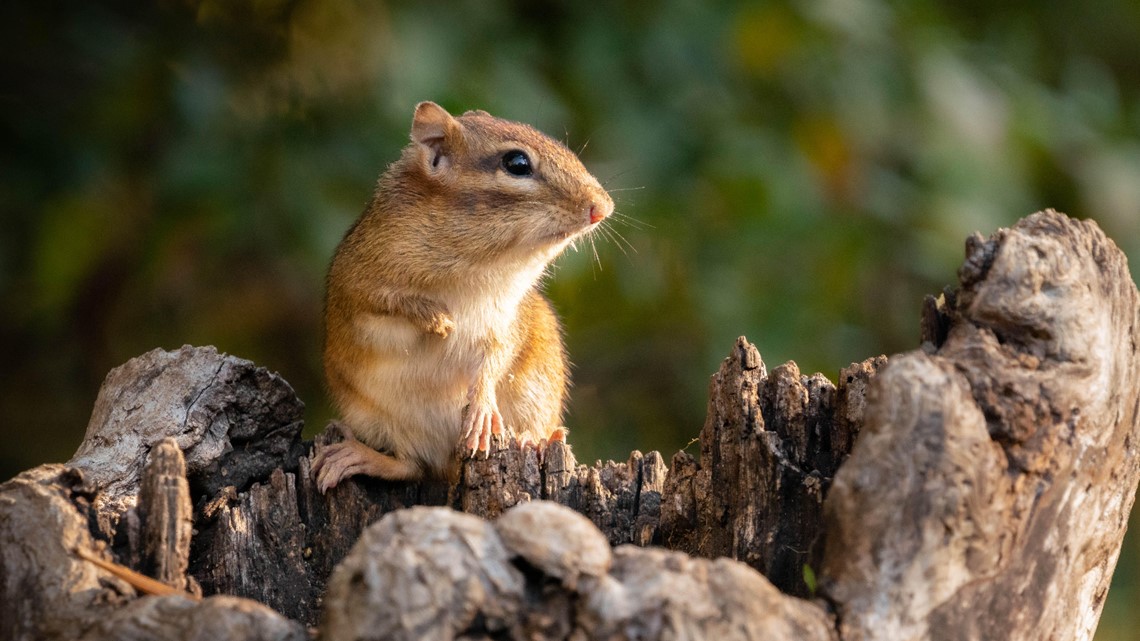Chipmunks are often misunderstood.
Many people mistake them for baby squirrels - but they're actually much different.
Chipmunks have distinctive reddish brown fur, a black stripe down the center of their backs and a set of two black stripes, according to state biologists. They're smaller than squirrels, measuring eight to 10 inches long, including three to four inches of tail. The chipmunk’s most distinguishing feature is its large cheek pouches, usually full of nuts or seeds to unload in an underground storage burrow.
The North Carolina Wildlife Resources Commission (NCWRC) is hoping you'll pay closer attention if you see one.
In a news release recently, the Wildlife Commission issued a kind of challenge to people in 12 counties: if you see a chipmunk, take a picture of it and note the location.
State mammologists said they're hoping to get a better understanding of where these cute critters are calling home.
"We’d like to update the state range map for the species," said Andrea Shipley, a mammologist with the Wildlife Commission.
Biologists are wondering whether there are more chipmunks in the Wilmington area or other counties in the southeast part of the state.
“We recently received an observation with photos of a chipmunk in the Wilmington area," Shipley said. "It is likely a case of hitch hiking, however we’d like the public to notify us of any chipmunk sightings east of Wake County.”


Are chipmunks expanding their range?
According to Shipley, there hasn't been a lot of chipmunk research in the eastern part of the state. She said it's possible they've lived there for a while but it's just not documented.
The Wildlife Commission is specifically interested in sightings in New Hanover, Brunswick, Onslow, Duplin, Sampson, Bladen, Cumberland, Moore, Montgomery, Anson, Richmond and Robeson counties.
Montgomery is the only listed county in the Piedmont region of North Carolina.
"Montgomery isn't indicated as having chipmunks," Shipley said.
Chipmunks are most common in the mountain region of North Carolina, according to Shipley. The further east you travel, the less common they are.
Why do chipmunks prefer the mountains to the coast?
Chipmunks are burrowers. They prefer to make their homes underground. The mountain region of North Carolina has more hardwood trees, which offer more stability to maintain an underground burrow structure.
"The coastal plain has a greater percentage of sandy soil," Shipley said. That means sand is no good for burrowing.


What are the benefits to having chipmunks in our area?
"Their role in the ecosystem is important for forest regeneration," Shipley said.
When chipmunks burrow, they hide away things like acorns. Eventually, underground seeds can be beneficial in cases of a forest fire, for example.
"There's a bank of seeds ready to germinate and flourish," Shipley said.
Oh, and don't forget, they're also pretty cute!
What are the disadvantages to having chipmunks where you live?
Oftentimes, chipmunks will get into people's plants and flowers.
But, did I mention - they're pretty cute?
Why does it matter whether chipmunks are expanding in North Carolina?
The NCWRC would like to update its state range map. That could be good for future research if biologists know they can find chipmunks in a certain area.
What can I do to help?
If you live in any of the counties specified and observe a chipmunk or its habitat, please take a picture, note the location (GPS coordinates preferred) and contact the Commission’s NC Wildlife Helpline, Monday through Friday, 8am - 5pm, at 866-318-2401, or email anytime at HWI@ncwildlife.org.
Once the state receives enough confirmed sightings, it can update the state range map.



